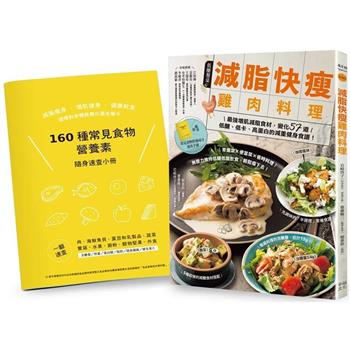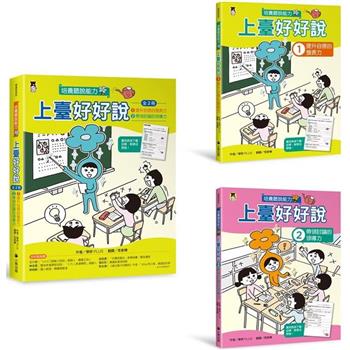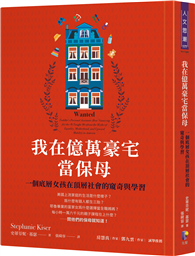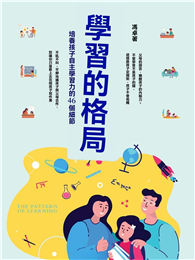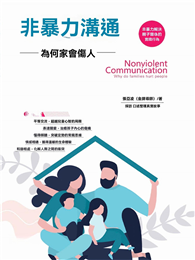The book you hold in your hands is a culmination of my thirty years of clinical expertise in cancer treatment. It is also the world's first attempt to integrate Chinese philosophical thoughts with Western oncology, offering a fresh and unique perspective on cancer treatment. These Chinese philosophical concepts are not merely philosophical or spiritual elements but also serve as analytical tools, elevating cancer treatment to the level of philosophical inquiry and inspiring deep contemplation on the essence of therapy.
The book is divided into three main parts, each elaborating on the core principles of cancer treatment from different levels: ‘The Essence of Simplicity,’ ‘The Way, Laws, Arts, and Tools,’ and ‘Practical Applications.’
作者簡介:
Dr. Chi-Ting Liau
Education
Bachelor of Medicine, China Medical
College, Taiwan
Professional Experience
Attending Physician, Division of Medical
Oncology, Chang Gung Memorial
Hospital, Taiwan (since 1996)
Publications
● Testimonies of Cancer Survivors
(translated from Japanese)
● Introduction to Cancer Nutrition
Therapy (translated from Japanese)
● Health Checkup Guide (translated
from Japanese)
● Clinical Oncology
● Masterful Cancer Treatment: Returning
to Basics in Philosophy and Practice
章節試閱
Introduction: The Minimalist Mindset Against Cancer
▌Theory and Experience
The book you hold in your hands is a culmination of my thirty years of clinical expertise in cancer treatment. It is also the world's first attempt to integrate Chinese philosophical thoughts with Western oncology, offering a fresh and unique perspective on cancer treatment. These Chinese philosophical concepts are not merely philosophical or spiritual elements but also serve as analytical tools, elevating cancer treatment to the level of philosophical inquiry and inspiring deep contemplation on the essence of therapy.
▌Responsibility and Belief
As a physician committed to scientific evidence and specializing in cancer misdiagnosis and medical errors, I have witnessed too many precious lives lost due to improper medical care. This deeply pains me and instills a profound sense of responsibility. I firmly believe that cancer is not a terminal illness; with the correct diagnosis and treatment, it can be effectively managed or even completely cured. This book is not a magical cure-all, but a collection of wisdom from my thirty years of clinical experience. I share my insights without reservation, aiming to help those who have been misdiagnosed or improperly treated find the best therapeutic options and maintain a positive and optimistic mindset.
▌Structure of the Book
The book is divided into three main parts, each elaborating on the core principles of cancer treatment from different levels: ‘The Essence of Simplicity,’ ‘The Way, Laws, Arts, and Tools,’ and ‘Practical Applications.’
▌ The Essence of Simplicity: Core Principles of Cancer Therapy
In the first part, ‘The Essence of Simplicity,’ I draw from the philosophy of the Tao Te Ching, using the framework of ‘The Way, Laws, Arts, and Tools’ to explain the levels and principles of cancer diagnosis and treatment, highlighting the significance of simplicity in cancer treatment strategies. ‘The Way’ pertains to determining whether one has cancer, which marks the beginning of the cancer care journey. ‘Laws’ involves staging the cancer and deciding on curative treatment for M0 and palliative care for M1. ‘Arts’ refers to choosing the appropriate therapeutic techniques such as surgery, radiation therapy, and chemotherapy. ‘Tools’ indicates the effective treatment tools used, such as Da Vinci surgery, proton therapy, chemotherapy drugs, and targeted therapies.
▌The Way, Laws, Arts, and Tools: In-Depth Theoretical Expansion
In the second part, ‘The Way, Laws, Arts, and Tools,’ I expand on these concepts in detail. ‘The Way’ represents our fundamental understanding of cancer, exploring its root causes through the concept of ‘field cancerization.’ This theory helps us understand the causes, characteristics, diagnostic methods, treatment strategies, and long-term follow-up of cancer, allowing us to formulate a comprehensive treatment strategy for the patient's entire life.
‘Laws’ refers to the staging and treatment guidelines for cancer. Drawing on the wisdom of the Diamond Sutra, specifically the phrase 'The mind should act without any attachments,' we emphasize adopting a ‘predictive’ rather than ‘prognostic’ mindset when choosing treatments.
When discussing ‘Arts,’ we not only consider the selection of treatment modalities but also emphasize the diversity of treatment purposes. Whether it is surgery, radiotherapy, or chemotherapy, each treatment should have a clear purpose, including primary, induction, adjuvant, salvage, and palliative. These five purposes guide us in formulating the most appropriate treatment plan for patients.
Finally, ‘Tools’ represents the techniques and tools we use for treatment, introducing the various types of local and systemic therapies.
▌Practical Applications: Applying Core Principles in Clinical Practice
In the third part, ‘Practical Applications,’ I present real-life cases that illustrate how I apply these core principles in clinical practice. These cases showcase my approach using the ‘The Way, Laws, Arts, and Tools’ framework to assist patients across various stages of cancer, identifying those who have been misdiagnosed or improperly treated. They provide opportunities for individuals who should not have faced a life-threatening situation, offering them masterful cancer treatment. These cases also highlight the challenges I have encountered in cancer treatment and how I have navigated and resolved them, sharing my insights and experiences.
▌Spreading Hope
The purpose of writing this book is not just to share what I have learned and felt over the past thirty years, but to convey a message: cancer is not a life-threatening illness; it can be treated, it can be prevented, and it can be reversed. I hope this book will serve as a mentor and friend to cancer patients and their families, giving them confidence and strength, helping them find the most suitable treatment plan, and allowing them to enjoy a higher quality of life. I also hope this book will become a reference for the medical community, inspiring more physicians and healthcare professionals to improve their diagnostic and treatment standards, thereby reducing medical errors and regrets.
▌An Invitation to Read
I sincerely invite you to read this book and explore with me this profound approach to cancer care. I believe that as long as we do not give up, lose hope, or compromise, we can then defeat cancer and achieve the goal of disease-free survival.
Dr. Chi-Ting Liau,
recognized as the 'Master of Cancer Treatment'
December 2024
Introduction: The Minimalist Mindset Against Cancer
▌Theory and Experience
The book you hold in your hands is a culmination of my thirty years of clinical expertise in cancer treatment. It is also the world's first attempt to integrate Chinese philosophical thoughts with Western oncology, offering a fresh and unique perspective on cancer treatment. These Chinese philosophical concepts are not merely philosophical or spiritual elements but also serve as analytical tools, elevating cancer tre...
目錄
Table of Contents
Preface: The Essence of Simplicity – It's All About M0 and M1/07
Preface: Western Medicine Nurtured My Growth, Eastern Philosophy Enlightened My Path ( Additional Preface for the English Edition )/10
Introduction: The Minimalist Mindset Against Cancer/13
Disclaimer and Author’s Statement/17
Part 1: The Essence of Simplicity‧19
Chapter 1: A Tao Te Ching Perspective on Life and Death with Cancer/20
◼ The Four Stages of Cancer in the Tao 20
◼ The Tumor Code 28
◼ Epidemiology 31
◼ Preventive Medicine 33
◼ Cancer Screening 36
◼ Symptoms and Signs 38
◼ Definitive Diagnosis 39
◼ The Tao Gives Birth to the One: No Cancer vs.With Cancer 41
◼ The One Gives Birth to the Two:No Metastasis (M0) vs. Metastasis (M1) 50
◼ Going with the Flow 79
◼ The Way, Laws, Arts, and Tools 81
◼ The Minimalist Mindset Against Cancer 83
◼ Fool, the Key Point is M0 or M1 84
◼ If He Did Not Laugh, It Would Not Be The Tao 93
◼ A Tao Te Ching Perspective on Life and Death with Cancer 94
Part 2: The Way, Laws, Arts, and Tools‧95
Chapter 2: The Way - The Most Important Term in Oncology:Field Cancerization/96
◼ Multiple Cancers 96
◼ The Significance of Field Cancerization 96
◼ Optimal Example of Field Cancerization: Upper Aerodigestive Tract 99
◼ Field Cancerization in Other Epithelial Cancers 106
◼ Choosing the Lesser of Two Evils 112
◼ Cancer Can Be Prevented 120
◼ Weighing the Benefits and Risks 122
Chapter 3: The Laws - The Two Most Important Terms in Oncology: Understanding Traditional Chinese Philosophy Through Prognosis and Prediction/123
◼ Introduction 123
◼ Definitions of ‘Prediction’ and ‘Prognosis’ 123
◼ Examples for Illustration 124
◼ Clinical Application 125
◼ The World of Oncology vs. The World Outside Oncology 127
◼ The Difference Between Prognosis and Prediction 129
◼ Dialogue Between Fisherman and Woodcutter:One Who Possesses These Six Items Is Human. Whether One Catches Fish or Not Is Up to Fate 143
◼ Tao Te Ching: The Way of The Sage Is to Act Without Striving 144
◼ Diamond Sutra: The Mind Should Act Without Any Attachments 145
◼ The Day Robots Become Buddha 145
◼ Just Do It 148
Chapter 4: The Arts - The Five Most Important Terms in Oncology: Primary, Induction, Adjuvant, Salvage, Palliative/149
◼ Key Concepts 149
◼ The Purpose of Treatment Modalities 151
◼ Tumor Treatment: Who is the Lead Role? Who is the Supporting Role? Who is the Director? 152
◼ Primary Therapy 153
◼ Salvage Therapy vs. Palliative Therapy 156
◼ Induction (Neoadjuvant) Therapy vs. Adjuvant Therapy 162
◼ Conversion Chemotherapy: A Variation of Induction Therapy 166
◼ Consolidation Chemotherapy: A Variation of Adjuvant Therapy 167
◼ Maintenance Chemotherapy: A Variation of Adjuvant and Palliative Therapy 168
◼ Concurrent Therapy 170
◼ Terminology in Oncology and Hematology 173
◼ Conclusion 176
Chapter 5: The Tools - Types of Local Therapies/177
◼ Core Concepts 177
◼ Local Treatment Modalities 177
◼ Basic Principles of Surgical Treatment 178
◼ Basic Principles of Radiation Therapy 189
◼ Other Techniques of Local Therapies 193
◼ Optimization of Local Treatment 194
Chapter 6: The Tools - Mechanisms of Action in Systemic Therapies /196
◼ Introduction 196
◼ War Scenario 196
◼ Hormone Therapy 197
◼ Chemotherapy: Seven Parts Killing the Enemy, Three Parts Self-Damage 198
◼ Targeted Therapy: Exhausting the Enemy's Resources 200
◼ Immunotherapy: Revitalizing Our Immune Forces 203
◼ Antibody-Drug Conjugates: Perfect Integration of Chemotherapy and Targeted Therapy 205
◼ Precision Medicine: Comprehensive Offensive 209
Part 3: Practical Applications.211
Chapter 7: Masterful Cancer Treatment/212
◼ Beautiful mistake 212
◼ Classification and Treatment of Solid Tumors 214
◼ Challenges from the Patient's Side: The Source of All Confusion 221
◼ WHO Classification: Defining What Is ‘Cancer’ 222
◼ Challenges from the Physician's Side
Primary Care Physician: Challenges in Routine Internal Medicine Evaluations 229
Pathologist: Challenges in Confirming Diagnoses 247
Radiologist: Challenges in Accurate Disease Staging 280
Non-Oncology Physicians: Limited Specialization in Cancer Treatment 302
Non-Team Oncology Physicians: Suboptimal Treatment 313
Team Oncology Physicians: Most Appropriate Treatment 320
◼ Masterful Cancer Treatment 323
Table of Contents
Preface: The Essence of Simplicity – It's All About M0 and M1/07
Preface: Western Medicine Nurtured My Growth, Eastern Philosophy Enlightened My Path ( Additional Preface for the English Edition )/10
Introduction: The Minimalist Mindset Against Cancer/13
Disclaimer and Author’s Statement/17
Part 1: The Essence of Simplicity‧19
Chapter 1: A Tao Te Ching Perspective on Life and Death with Cancer/20
◼ The Four Stages of Cancer in the Tao 20
◼ The Tumor Code 28...
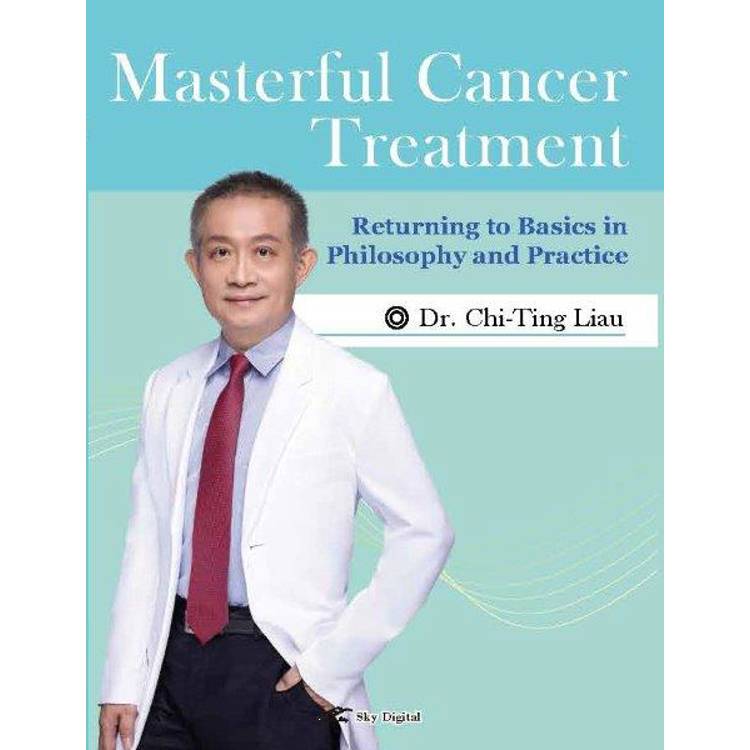
 共 3 筆 → 查價格、看圖書介紹
共 3 筆 → 查價格、看圖書介紹
